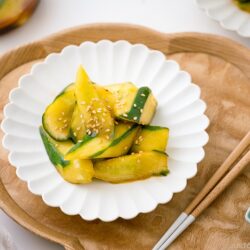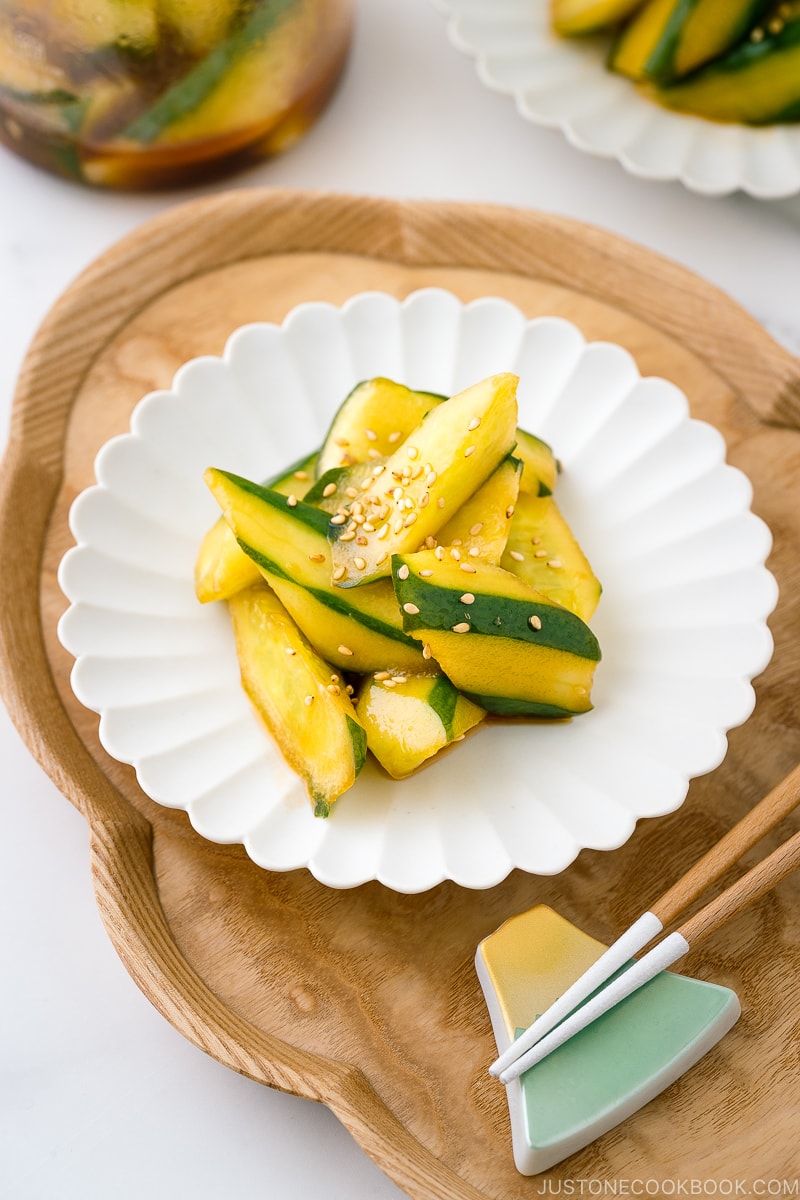
When we serve a Japanese Ichiju Sansai (one soup three dishes) style meal, there’s always one or two kinds of pickled vegetables as part of the set. The pickles are considered as a palette cleanser and are enjoyed between dishes.
In Japan, you can find a great variety of pickles being sold at the grocery stores or the supermarket. Here in the US, I often make my own quick pickles or what we call Asazuke (浅漬け), with vegetables that are readily available such as cucumbers and cabbage. They are easy and versatile, and today let’s make Spicy Japanese Pickled Cucumbers (ピリ辛きゅうりの浅漬け)!
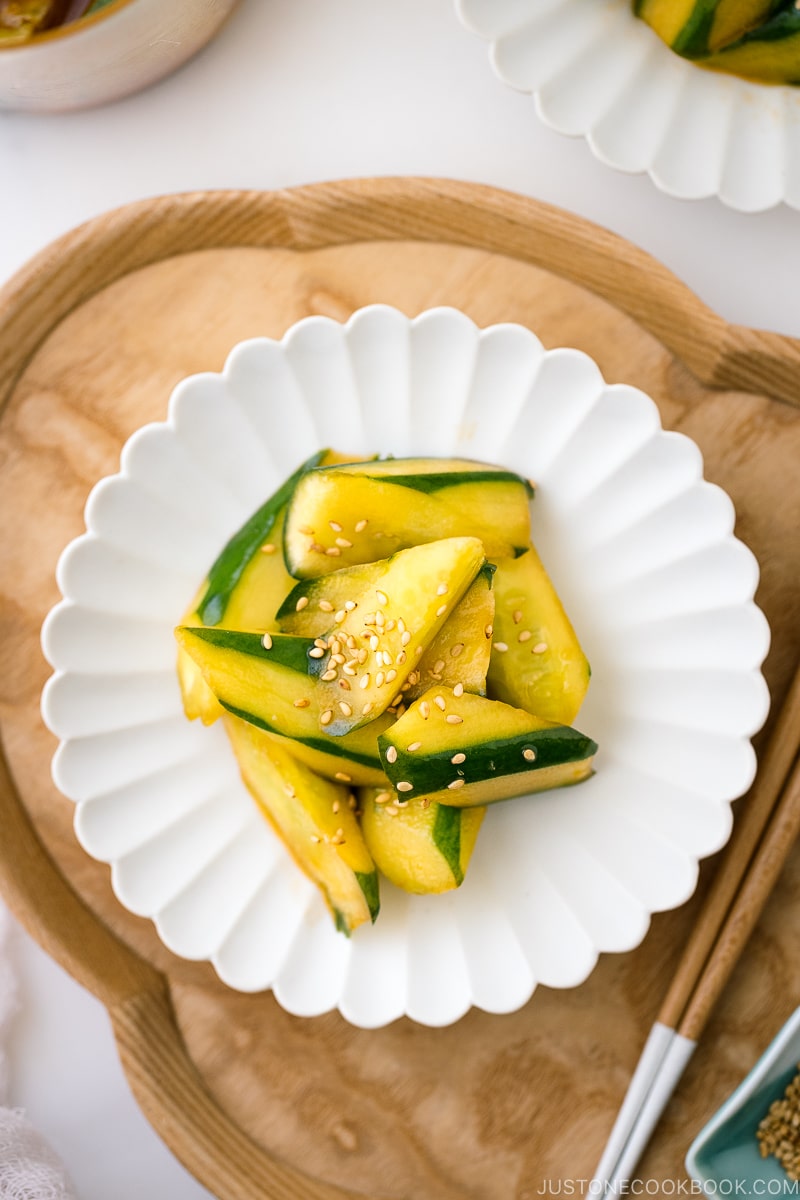
How to Make Spicy Japanese Pickled Cucumbers
Ingredients You’ll Need
- Japanese or Persian cucumbers – why this variety? Read below.
- Salt
- The pickle solution: soy sauce, sesame oil, sugar, and la-yu (Japanese chili oil)
- Toasted white sesame seeds
What’s La-Yu?
La-yu (辣油, ラー油) is a Japanese chili oil. Japanese don’t really have many spicy dishes, but we use a few dollops of la-yu in some dishes when we want to create some heat.
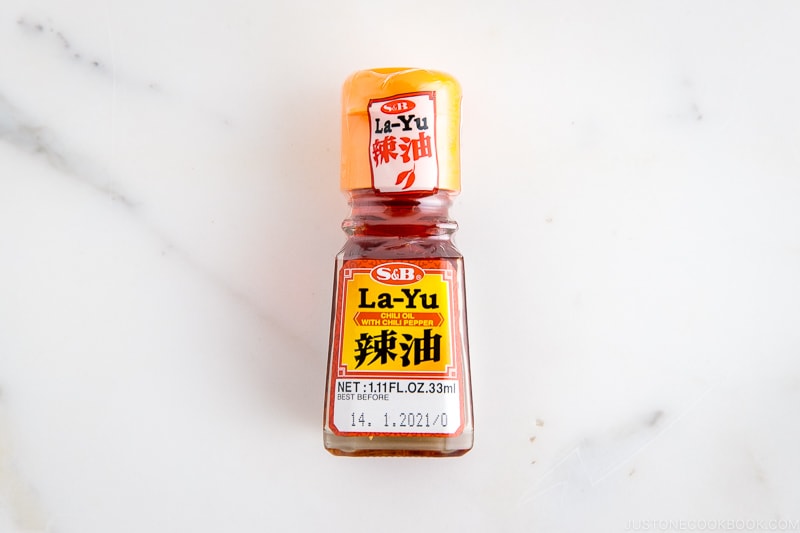
You can find La-Yu at Japanese grocery stores, Asian grocery stores, or Amazon.
Overview Steps
- Cut cucumbers into chunks and sprinkle salt to withdraw some moisture.
- Marinate the cucumbers in the pickling solution for 6 hours or overnight.
- Sprinkle sesame seeds and enjoy!
It’s seriously simple yet packed with a lot of punch!
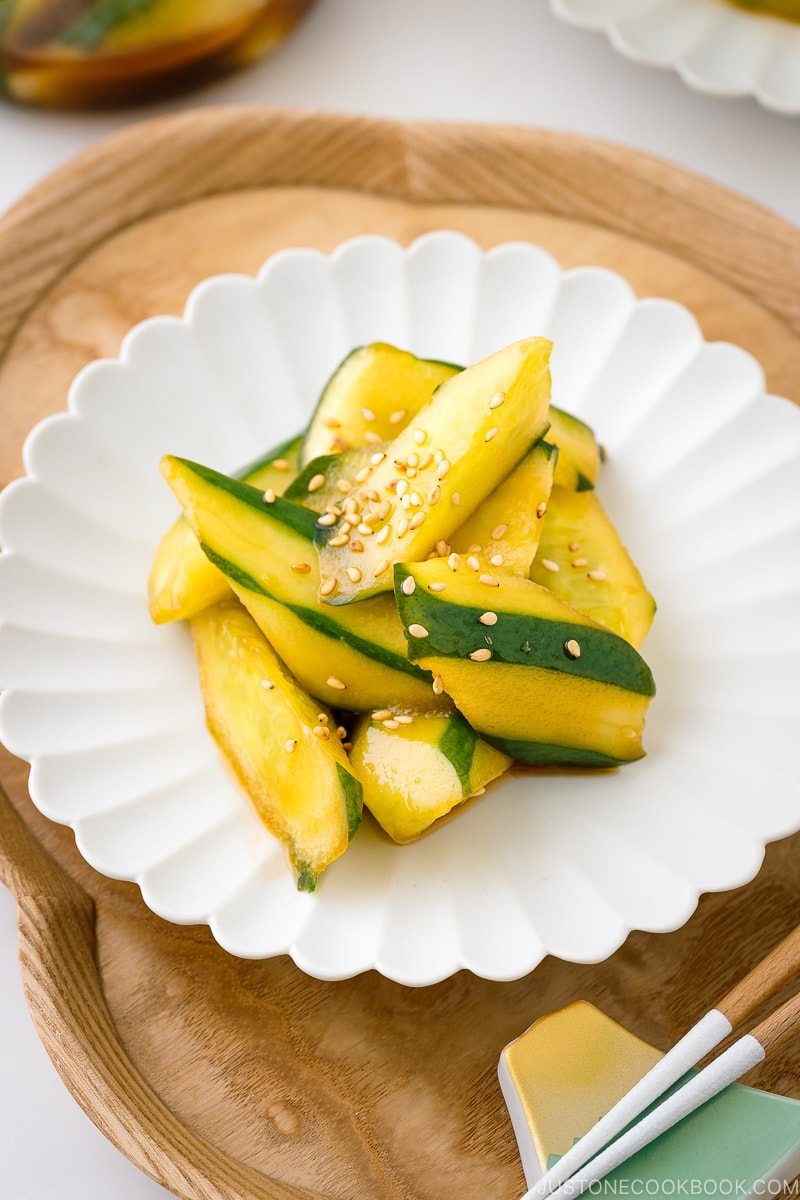
3 Key Tips To Pickle Cucumbers
Tip #1: Use Japanese or Persian cucumbers
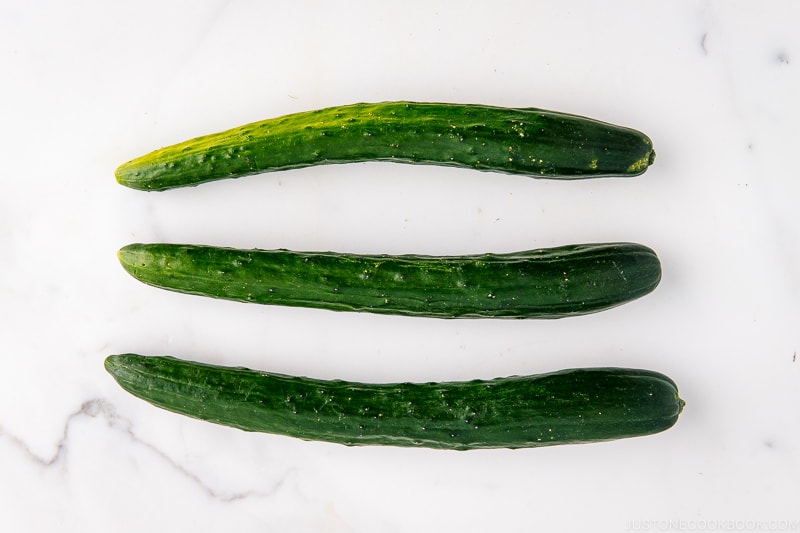
These varieties have less seeds in the center of the cucumber, so when you pickle the cucumbers, they don’t release much moisture and dilute the solution.
Tip #2: Cut the cucumber using “Rangiri” method
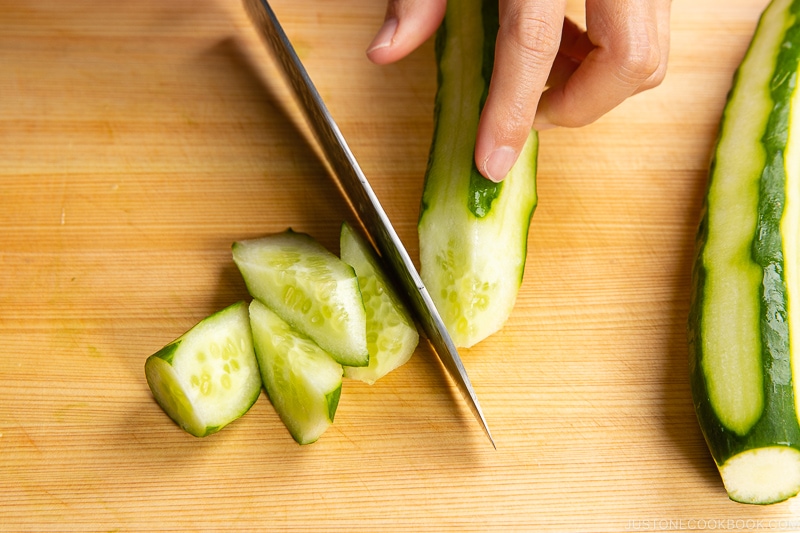
Here I slice the vegetable diagonally while rotating the vegetable a quarter (or 45 degrees) between cuts so every cut is random. This Japanese cutting style is called Rangiri (乱切り) and it creates more surface; therefore the cucumbers can absorb more flavors.
3. Salt the cucumbers to withdraw moisture
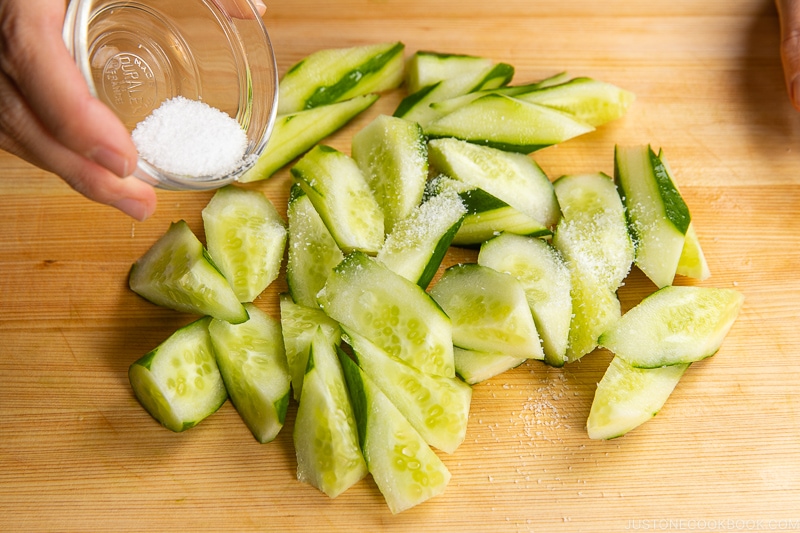
Don’t worry about sodium here. To pickle the vegetables well, you need the salt to first withdraw some moisture out of the cucumber so it can better absorb the seasonings later.
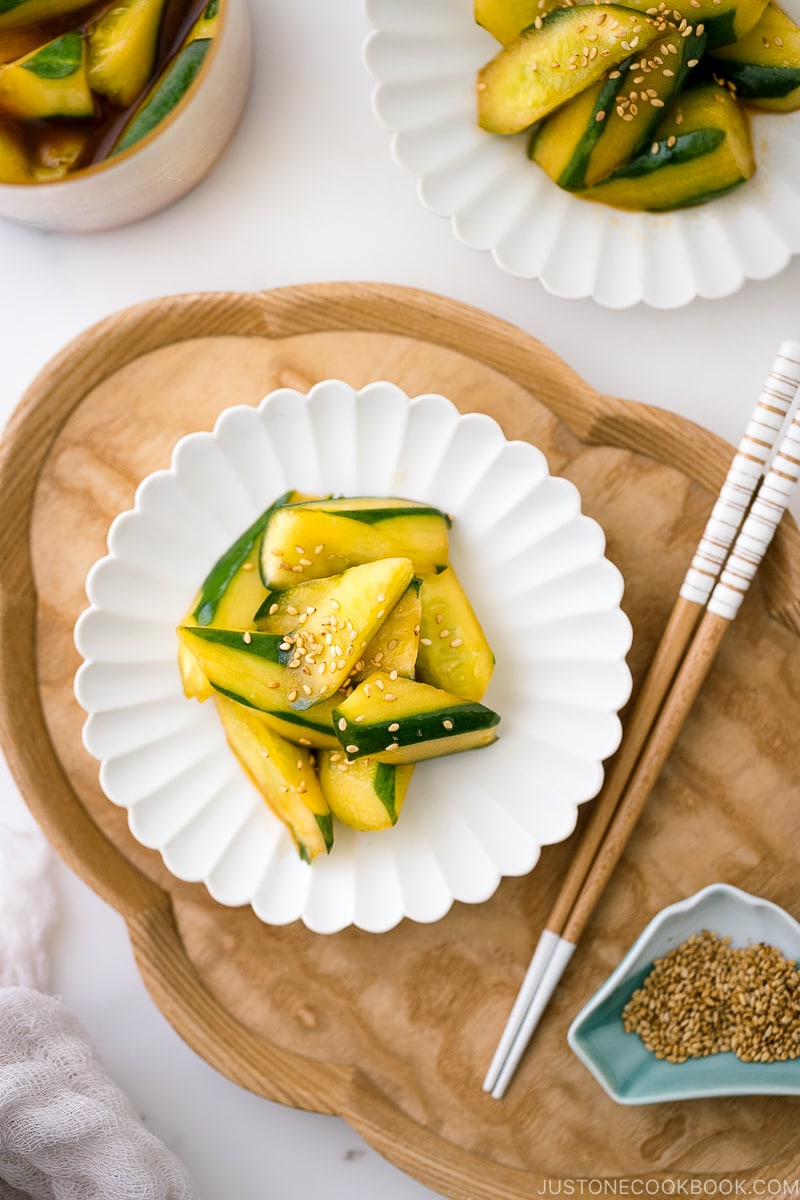
What to Serve with Spicy Japanese Pickled Cucumbers
It pairs well with many mains and can be served as a snack too, and here are just my recommendations:
- Miso Chicken
- Chicken Katsu
- Nikujaga (Meat and Potato Stew)
- Simmered Beef with Ginger (Shigureni)
- Kurobuta Pork Chop with Miso Sauce
- Butadon (Pork Donburi)
- Teriyaki Salmon
- Poke Bowl
Pickles usually contrast in flavor, texture, and temperature to the main dish. They cleanse your palate and give a break between dishes. Hope you enjoy this homemade side dish!

Wish to learn more about Japanese cooking? Sign up for our free newsletter to receive cooking tips & recipe updates! And stay in touch with me on Facebook, Pinterest, YouTube, and Instagram.
Spicy Japanese Pickled Cucumbers
Ingredients
- 2 Japanese or Persian cucumbers
- ½ tsp Diamond Crystal kosher salt
- ½ tsp toasted white sesame seeds (to garnish)
For the Seasonings
- 2 Tbsp soy sauce
- 1 Tbsp toasted sesame oil
- ½ tsp la-yu (Japanese chili oil) (store bought or make my Homemade La-yu)
- ½ tsp sugar
Instructions
- Before You Start…Please note that this recipe requires 6 hours of pickling time. In a small bowl, whisk together all the ingredients for seasonings: 2 Tbsp soy sauce, 1 Tbsp toasted sesame oil, ½ tsp la-yu (Japanese chili oil), and ½ tsp sugar.
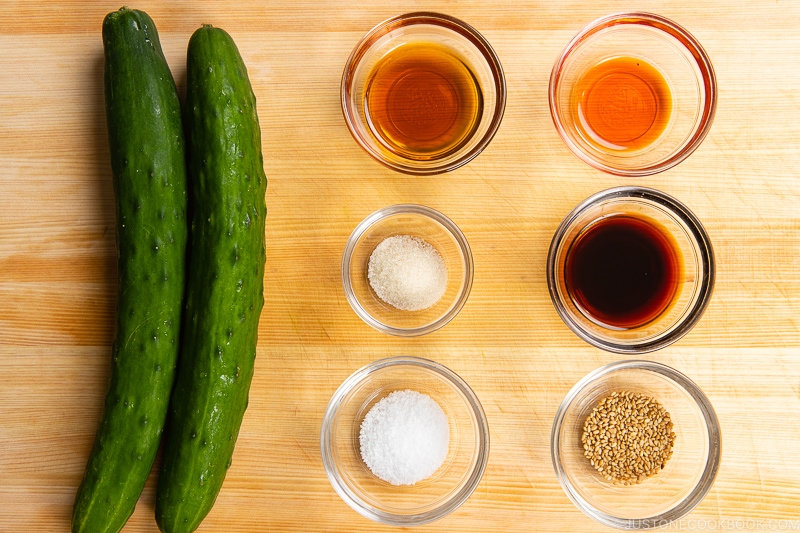
- Peel 2 Japanese or Persian cucumbers in a striped pattern, alternately peeling ½-inch (1.3-cm) wide strips lengthwise with strips of skin intact. With this method, the cucumber slices will have some decorative dark green accents and a little bit of extra crunchiness.
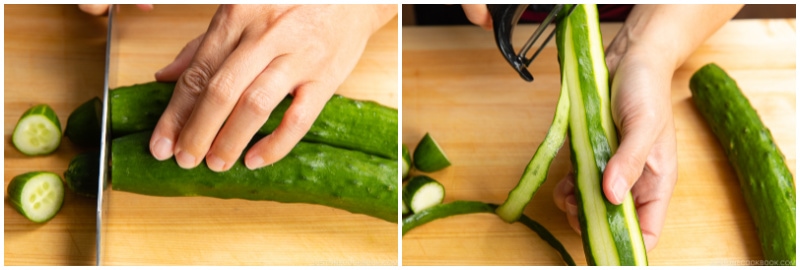
- Cut the cucumber using the Japanese cutting technique called rangiri.
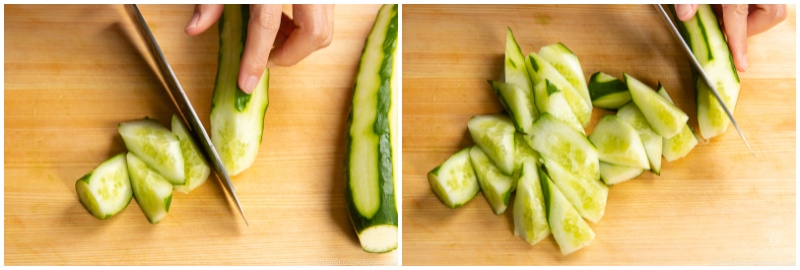
- Sprinkle ½ tsp Diamond Crystal kosher salt over the cucumbers and rub them with your hands. This is an important step to seal the moisture in the cucumber during pickling.
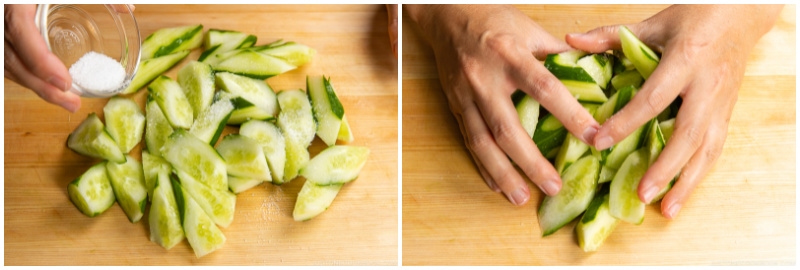
- Leave at the cutting board for 5 minutes, then transfer to a sieve. Quickly rinse the salt under running water.
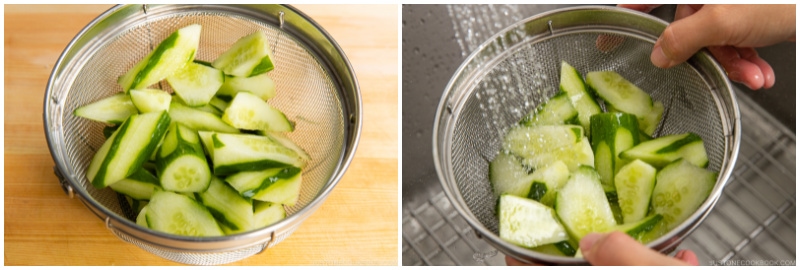
- Pat dry the excess moisture on the cucumber.
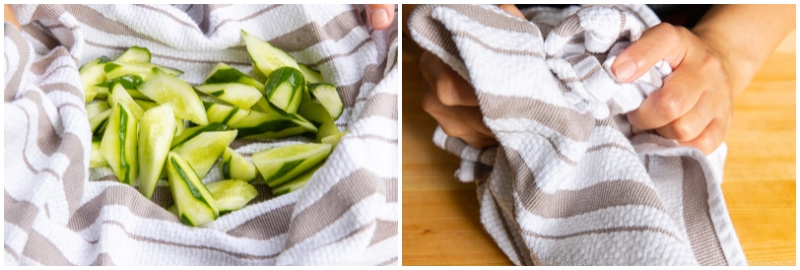
- In a container or a resealable plastic bag, add the seasonings.
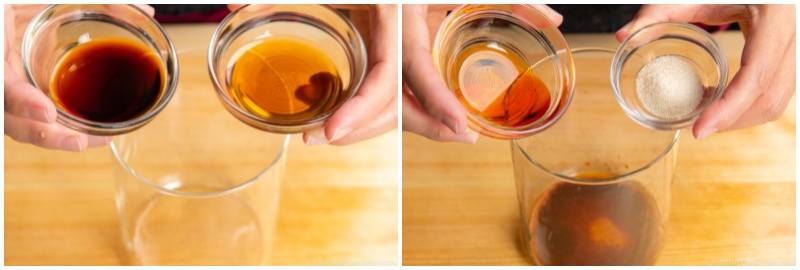
- Mix well and add the cucumber.
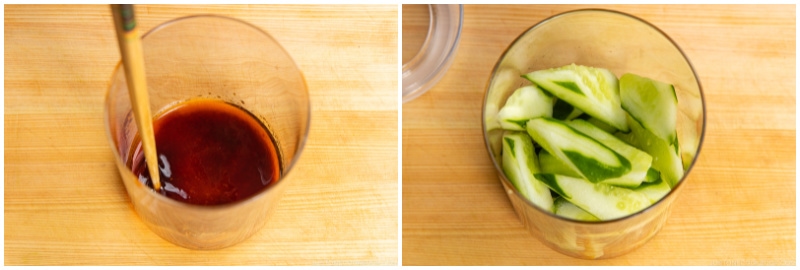
- Close the lid of the container, or seal the bag after releasing the air out. Shake the container or rub the cucumber from outside the bag.
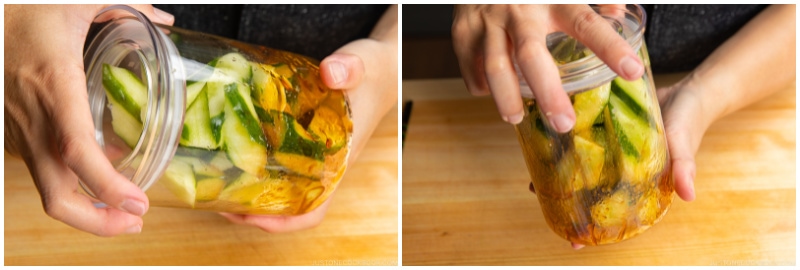
- If you have a weight, you can put it directly on top of the cucumber. The heavy weight will help pickle faster. Keep in the refrigerator for 6 hours or overnight.
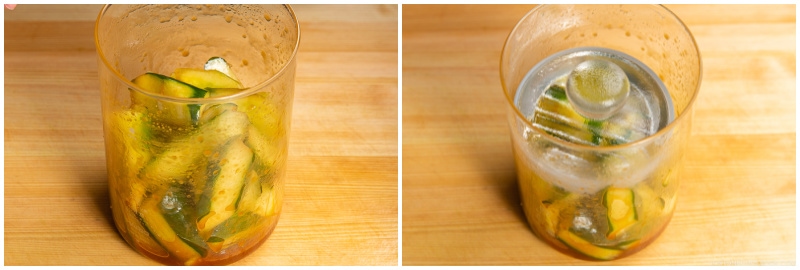
To Serve
- Take out the container/bag from the refrigerator and remove the weight if you used any.
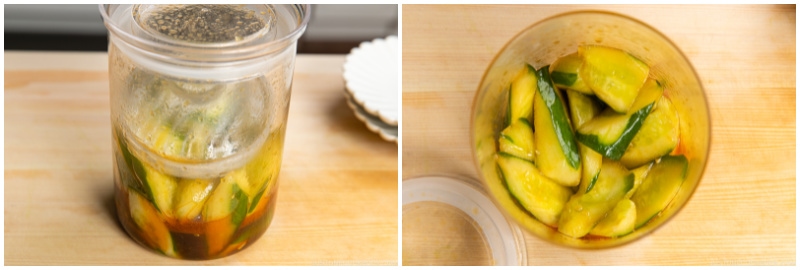
- Transfer to a plate and sprinkle ½ tsp toasted white sesame seeds on top. Enjoy!
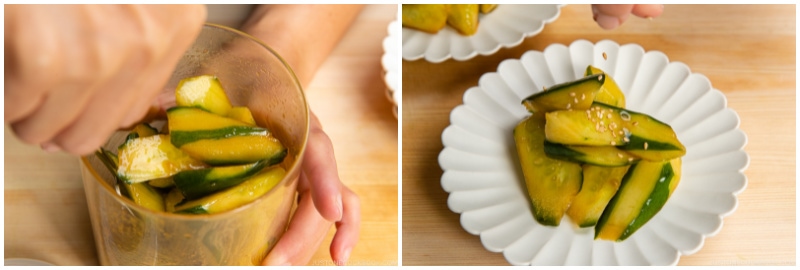
To Store
- Keep the leftovers in an airtight container and store in the refrigerator for up to 2 days. Discard the pickle solution after 2 hours or when cucumber is pickled to your liking.
Nutrition
Did you make this recipe?
Tag @justonecookbook on Instagram so we can see your delicious creation!
Editor’s Note: The post was originally published on April 22, 2011. The post has been updated with new images and blog content in September 2021.


